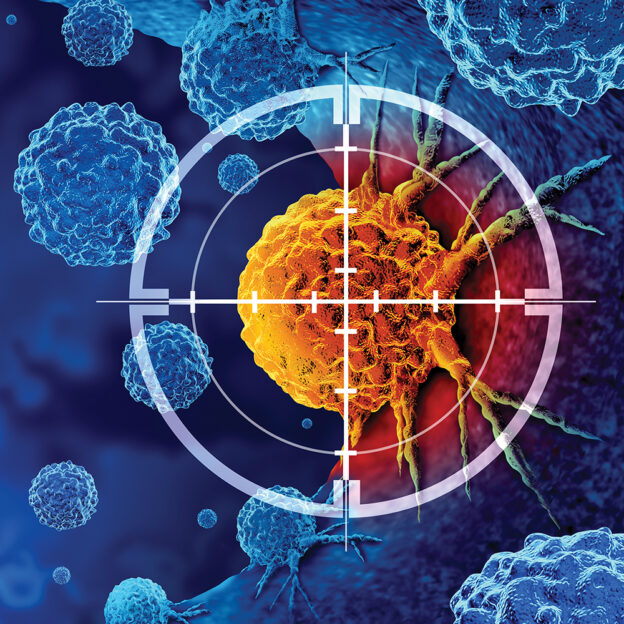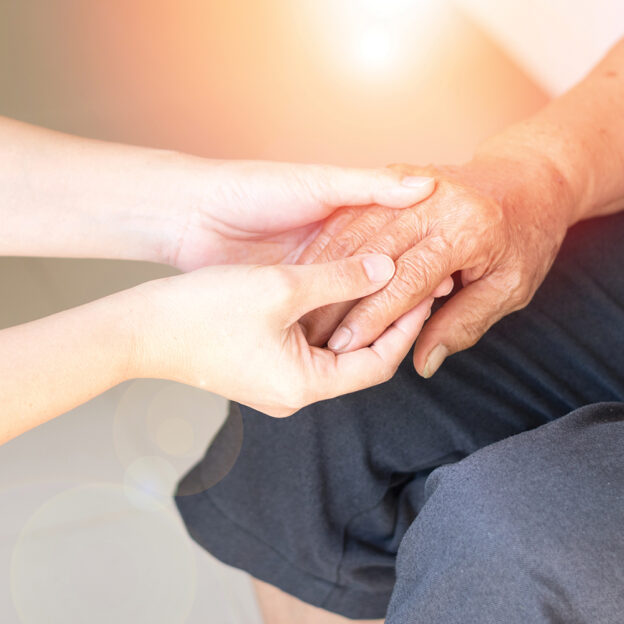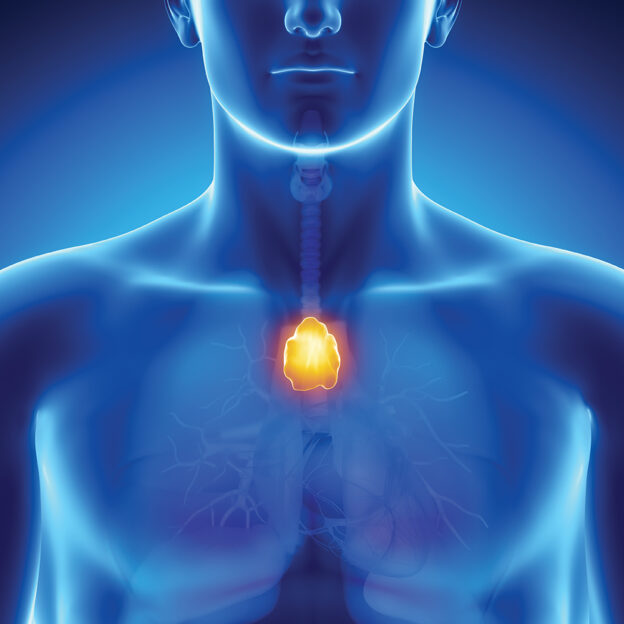Table of Contents
By Eileen McKusick, MA

I wrote a thesis for my master’s degree called “Exploring the Effects of Audible Sound on the Human Body and its Biofield.”
The word biofield was coined in 1994 at the National Institutes of Health by a panel of scientists in an attempt to give a scientific name to the field of energy that is purported to surround the human body.
Beverly Rubik is a pioneering researcher who wrote the biofield hypothesis in 2002; she describes the biofield as, “Basically a weak electromagnetic field that contributes to the organization of the organism.” However, I have come to see that one cannot separate the electricity in the body that powers our heart and brain and all our cellular processes from the magnetic field that surrounds it, so, when I use the term biofield I am referring not just to the field aspect but to the body’s electrical system in its entirety.
This field consists of known electromagnetic energies, and also what are called “weak” or “putative,” meaning, rumored-to-exist, subtle energies, as yet somewhat undefined by science. The way that I discovered this term biofield was through the path of independent research exploring how sound impacts health. More specifically, I had been using tuning forks—not the kind of tuning forks that you use to tune an instrument—unweighted forks that just make a specific tone. These are like an acoustic-tone generator. I also used weighted forks that have barrels or weights on the end that you use to apply to the body or on the body.
I had been exploring this as a hobby for a number of years. I picked up my first set of tuning forks in 1996 and I introduced them into my massage therapy practice. There were some people who I felt comfortable with enough to say, “Hey, can I wave this tuning fork over you and let’s see what we notice about your pain or ache?” I noticed a lot of curious things. Things that I didn’t really expect and things that took me a long time to understand. In fact, it took going to college.
Actually, I felt some skepticism as well. I didn’t totally understand what was happening clinically, and then I couldn’t really describe it well to the skeptics. They had a field day with me. But my clients and I noticed that they were experiencing relief.
Experimentation with Vibration
So, even though I didn’t really know a lot of facts about what I was doing, I began experimenting with more tuning forks. I found forks in the notes of C, D, E, F, G, A, and B, and each came with a tiny instruction book. The instructions advised a practitioner to do such things as use the C fork above the root center on the body, and D over the second center, and E over the third.
I started making observations. For example, as I passed the tuning fork around and over the body, I noticed the tone would change in different areas. Now, skeptics could say that was produced from the room acoustics or the doppler effect, but I found that I could have the same person in the same room at another session, do the same passes, and tones would sound different.
For example, one client had sharp pain in her shoulder, and I held the tuning fork over it. Now, you would think by using the tuning fork of the note of C, you could activate it and hold it anywhere near the body and that it would just continue to be a C note, but that’s not what I found. I found that if it was over an area of sharp pain, for example, the tone would actually go sharp—and I could hear it, and the person could hear it—and the body could hear it.
When the body heard itself as sharp, it would react. I discovered, if I held the tuning fork in the area where the body was in pain, that after just a few moments the tone would start to settle down and become less sharp. The client would often take a big breath at that point and relax. The tone at that point would then sound like a C again, and the person in this case rotated their shoulder—this is what happened the very first time I tried this—and they said, “Oh my gosh; there is no pain, it just disappeared!” We both looked at each other in surprise and delight, but who knew that could happen?
So, there was this whole sort of changing terrain that the body appeared to be producing, acoustic emissions that we can’t hear right now. However, for example, we can all feel people’s vibrations. If you ask anybody, “Have you ever got a bad vibe off of somebody?” Most everyone will say “Yes.” So, we sort of get that we do give off vibes, such as anger.
Everything in our body is in motion. It’s all rhythms, patterns, and flows, and everything in motion makes waves and waves propagate. This is how we read an EEG. The brain waves from neural activity are propagating right through our skull, and we can actually read them on the outside. They don’t just stop there—they propagate.
Stored Information: Mapping the Body with Sound
What I discovered was that the tuning forks acted almost like an invisible ink decoder; they could actually resonate with and thus read the vibes coming off the body. And I hypothesized that this happened because the waves coming off the body are very high frequency and very low amplitude, and a tuning fork, specifically these aluminum tuning forks that we use, produces technically an infinite number of overtones.
So, those inaudible, high frequency, low amplitude tuning fork frequencies intersect the frequencies coming off the body—and that information then precipitates down into the hearing range. Now, not everybody can hear the differences right off the bat, but people learn over time that different emotions actually produce different frequency signatures that you can hear and identify. These frequencies are a lot like music.
So, sadness sounds sad, and it actually lives in this very specific zone off the left shoulder. Every time we feel sad, that vibration of sadness rolls through us. It gets stored in the records of our electrical system and in our body’s biofield, in the electromagnetic field that surrounds our body. What I’ve done over the last two decades plus is map this field around our body with sonar, and I discovered that the biofield has a very specific anatomy and physiology that’s universal it seems from person to person.
Specific memories live in specific zones around our body. So, if we’ve experienced a lot of sadness in our life and sadness is weighing on us, that is going to accumulate—and that information accumulates off the left shoulder. And when people are really sad, they often develop pain in their left shoulder. So, I hear people saying, “What about the right shoulder?”
The right shoulder is more affected by saying “Yes,” when we are putting other people’s needs ahead of our own. That is, being a “yes” man or a nice girl. Taking care of other people overly creates an imbalance in the right shoulder. Also, if you ask me about any particular body part or organ, I could tell you the underlying mental-emotional imbalance that often informs imbalanced patterns.
When we feel or generate these emotions the memories don’t just go away. We’ve been taught that our memories live in our brain, but we don’t really see anywhere in nature or technology where information is stored in fat. There’s a lot of fat in the brain. What we do see is information stored in standing waves.
Bioelectric & Magnetic Fields
The following is what I discovered the biofield to be—with a caveat that this is hypothetical, based on my own exploration and attempt to fit the hypothesis into a scientific and also fractal framework where we see this model in other places in nature.
This is the most logical extrapolation of a hypothesis so far, and it is evolving. The body has an electrical system that we don’t really describe or talk about often. This is a classic example of not seeing the forest for the trees.
Most people understand that their heart is electric and that when you get an EKG that is measuring the electrical activity of your heart; or that an EEG measures the activity of your brain. Our blood carries a charge.
Some people know that our bones are piezoelectric crystalline structures that make electricity when we compress them. The nervous system is what we tend to think of mostly when we think of the electrical system of the body, but what I’ve really come to see is that the body has an electrical system in its entirety.
This system, like other self-organizing electrical systems, is toroidal in structure. That means it’s like a sphere with a spiral channel down the middle. It’s contained at the outer boundary with something like a plasma—an electromagnetic membrane that holds it as a self-sustaining unit. This isn’t very different from the earth’s magnetosphere, the protective bubble around the earth.
So, the earth has an electric charge, a magnetic field around it that is bounded by a protective membrane. The sun has the heliosphere at the outer boundary, which protects us from too much incoming radiation, hypothetically. The human biofield is like this as it’s a whole structure—our electrical system in its entirety. I don’t really think that we can separate the idea of the field around the body from the recognized electrical current in the body.
It’s a very basic law of physics that anything that has an electric current running through it has a magnetic field around it. You can’t separate the electric current going through the body from the magnetic field that surrounds it. What I’ve found in exploring this field is that all our memories are electromagnetic. Even smells are translated to electromagnetic information going to the brain; sound coming in the ear is translated into electromagnetic signals. Everything we see, touch, and taste is all electromagnetic. So, it would make sense that all these memories are stored in our electrical system.
We know that in the model of the earth the ionosphere, the magnetic band on the inner part of the atmosphere, is so electrically dense that things like radio waves and the Schumann resonance bounce off of it and form standing waves in the atmosphere. It’s these standing waves that seem to contain memory, as I’ve apparently discovered by combing through the body’s field. As I searched, I’d find an area, and this is something you can try at home with a tuning fork.
You can try it on people, pets, and plants. You just move the fork very slowly in toward the body, sensing it with your fingertips and listening closely to the tone indicating areas of turbulence and resistance. What I’ve found is that these areas of turbulence and resistance, depending on where they show up, relate to very specific traumatic experiences. By placing a fork in these zones, you allow the body to hear its own noise. This is just the same as with the shoulder case I mentioned.
The body basically auto tunes when you do this. It uses the feedback of hearing itself. It’s sort of like looking in the mirror and saying, “I have spinach in my teeth.” Your first instinct is to correct that. The body is the same way. When the body has this opportunity to have this resonant information of its own disorder reflected back at it—combined with the steady coherent input of the tuning fork—it adjusts its electromagnetic system, and it relaxes tension in the body and in the field: Remember, we can’t separate the magnetic field from the electricity going through the body.
So, any place that there’s pain or discomfort in the body there’s a corresponding signal in the field. Historically we go and we work in the spot where the pain is, not thinking that the problem is actually three feet away in the field from the memory of that motorcycle accident that you had. There’s also the possible stress that you had right before that event happened, which is creating an area in your electric-field memory banks of stress, turbulence, and pain. It’s living there.
We all know that we have those memories. We feel the charge in them. We can literally find those very specific memories in the field. What is interesting is that there is literal charge that feels like electromagnetic charge; we encounter this as resistance using the tuning fork. When you go slowly and pay attention you know when you find resistance. You realize, “Oh my gosh it’s stuck right here!” There’s a blob of electromagnetic energy frozen there because of a trauma. It’s related to the energy from going through that stress.
When the tuning fork stays in that energy it relaxes the information, the pattern of the waveform that’s there, and the energy that has been frozen releases. The process is one of combing through the field, finding the turbulence, finding the stuck energy, letting it relax, and this relaxes the body. This is always accompanied by a deepening of breath, a feeling of opening or lightning, a release feeling.
The field takes that energy that was frozen and brings it back to the midline of the body, or midline of the torus, where that energy then enters back into circulation in the field. It’s almost like going back through our lives and finding all these traumatic places that aged you, that wore you out, that you’re feeling the pain from, even now, and harmonizing the memory. The waveform of the memory and restoring the energy back.
This has an anti-aging property. Now it’s the opposite of entropy, or lack of order. The tuning process is syntropic, and it is liberating. You can think of it more as accessing your potential than healing your wounds, because these are one and the same. It is a lot more fun to feel the pain of a wound, you know, from when you were 10 and your grandmother died, and realize the potential of releasing it. You never talked about it and you kind of put it away and now this memory comes. You might cry a little bit, but then the process will be liberating that sad, heavy energy that has been stuck.
I’ve really come to see all of these places—where we freeze, have had trauma inputs, these places in our electromagnetic system that are frozen—as trapped sound. These are the tears we didn’t shed or the holding back from the truth we didn’t speak. I just watched my husband stub his toe really hard the other day, and he didn’t make a sound, and I thought, “Oh, that’s a bubble forming in your field.”
Opportunity to Release
The tuning process is an opportunity not only to liberate that sound, that energy, but also the breath. The more we relax and liberate our breath, the more freely we breathe, and then the more energy we have. Breath is part of the whole field of electric health.
When I was moving the forks through the field in the early years and found resistance, I wondered, “What is this stuff? What am I going to call it?” This led to discovery of the electric system and electric universe theory.
For those who aren’t familiar with it basically the idea that seems to be dawning on us is that the universe, our environment, and everything in it is electric. The solar wind is a stream of electromagnetic particles, and when we get a big coronal mass ejection we get northern lights because our upper atmosphere just went into glow mode with all of this extra electricity.
So, it’s not just our bodies that are electric, but our entire environment. There are electric microbes in the soil, and the moon is magnetic. Even our digestion is a process of electrical fermentation, and it’s one of the reasons why eating fermented foods helps give people more digestive juice. There’s electricity going on in that fermentation. Even oxygen, which we tend to think of as a gas, has electric qualities.
Your Biofield is Electromagnetic
We’ve all been trained in the past to look at our bodies, our health, and the world around us as chemical and mechanical only. It’s also all electric, acoustic, rhythmic, and resonant. This is more the fundamental truth of who we are, and those qualities underlie the chemistry and the mechanics of everything. Our electromagnetic body [is] really the essence of our aliveness.
Physicians use EKG as an indicator that you’re alive; you have electricity going through your EKG; the heart monitor shows that rhythm. It’s that current of life going through you. When you’re dead your light goes out, but your body is still there. The electrical, living, illuminated part of you—which I would even call your soul as your biofield—is electromagnetic.
For example, think about a soul singer and how fiery they are. That’s electric. We can’t really separate the electric characterization from a person. We’ve been using religious language to talk about this, but really there’s a biological reality to this inner light, and that is our electrical system. Yes, it can be seen as spiritual, but it can also be biological simultaneously.
It is spiritual in a way because the same light that powers our body powers the sun and our world. All the stars in the sky are all electric. It’s all one light. As the physicists say, our bodies are made of slowed-down light waves.
Importance of Breath, Singing, and Exercise
Electric health care is so much easier than chemical health treatments. The best way to get electricity into your body is through your breath. The oxygen molecule has 4 free electrons, and those electrons bond electromagnetically to the hemoglobin in our blood. The electric charge from these electrons enters the cells and makes them work. The more charge you have going through your body, the more electricity you have, and the higher your pH.
Low voltage equates to low pH. You can get a lot more electricity and energy going through your body just by relaxing and breathing more freely. One great way to do that is to hum, sing, or tone. My number one prescription for improving your electric health is through your own voice and your own body. Exercising, working out, dancing, being physically active compels your bones to make electricity. These activities make you breathe more, and it’s free!
Tools
I offer a few sound tools to help raise voltage. One is a tuning fork that’s called a Sonic Slider. This is the 12th harmonic of the Schumann resonance. The average electric pulse of the earth is around 7.83 hertz. The 12th harmonic is 7.83 times 12. So, that nourishing earth vibration, which we lose in cities, urban areas, and being indoors is embedded in this frequency.
This is something that anyone can use at home. You just activate it and you place it anywhere on your body. You can rub it on your scalp, neck, arms, back, trigger points. People use it to get rid of pain, and to help liberate the breath. You can leave the Slider on any spot and let the vibration run out. It also induces breathing. It’s a really simple tool to help release the knots and sticky areas out of the body.
There are many other tools at our website, and people can see there that they can learn how to become a biofield practitioner. We now have online courses thanks to 2020. We never would have gone to the online format without it, and our early students who are doing the classes love it; they’re actually learning the subtleties of moving tuning forks through the air around people online. Biofieldtuning.com is the website, and another website I offer is ElectricHealth.com. There are going to be lots of courses available in 2021.
Concluding Remarks
The biggest thing that I’ve discovered from this work is that when you get the noise and the resistance out of a person’s electrical signal, there’s a beautiful, perfect harmony underneath in everyone. It’s simply possible for us through sound, through conscious intention to really nurture the harmony in us. I believe in our humanity, and what I’ve seen in really looking deeply into people’s souls, and listening deeply, is that everyone is amazing. Each person is an incredible gift, and we’re all worthy of the gifts that we have—and the more to come.
—
This article is a Well Being Journal adaptation based on an interview conducted by Monika Muryani and Lee Carrol with Eileen McKusick in their 23 December 2020 Healing Wednesday series. For more information about the series or Lee and Monika, see www.Kryon.com.
Eileen McKusick is a pioneer in the fields of the human biofield, therapeutic sound, and electric health. She’s a researcher, an author, an inventor, an educator, and a practitioner. As the originator of Biofield Tuning she has trained thousands of students worldwide since 2010. She’s also the founder of the Biofield Tuning institute, which conducts grant-funded approved and peer-reviewed studies on the human biofield. Her award-winning best-selling book is Tuning the Human Biofield: Healing with Vibrational Sound Therapy. Her new book, Electric Body, Electric Health: Using the Electromagnetism within (and Around) You to Rewire, Recharge, and Raise your Voltage, is now available as well.





